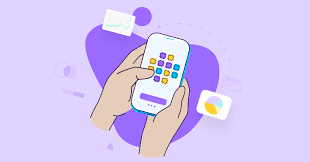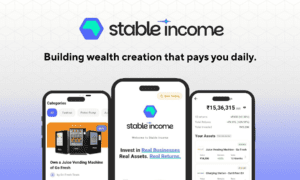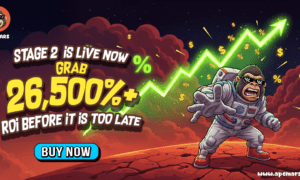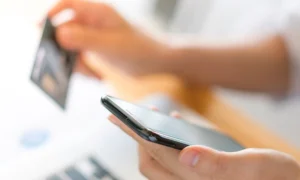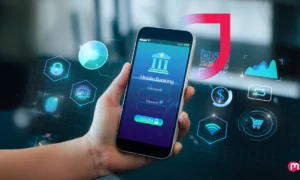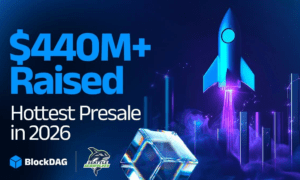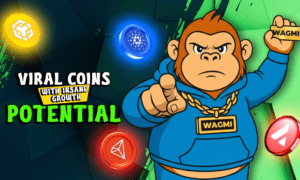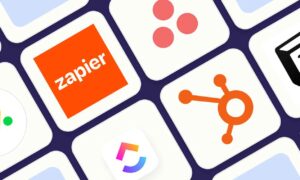Getting users to install your app can be challenging. Keeping them engaged is even harder.
Most teams spend months polishing onboarding screens, setting up push notifications, or running paid acquisition campaigns, only to watch users drop off after a day or two. And when engagement drops, the usual fix is to send more messages, more often. But that rarely solves the real problem.
The stakes are high; only around 3% of mobile app users stay active 30 days after installation, and nearly 25% drop off after using the app just once. When engagement does not evolve with user behavior, most users leave before you even get a second chance.
What you need instead is an app engagement strategy that meets users where they are in their journey and responds to what they are trying to do in that exact moment.
In this guide, we break down how to build a strategy that adapts to both lifecycle and intent, providing real examples, actionable steps, and clear takeaways that you can apply today.
Why Static Engagement Fails in Dynamic Apps
Static engagement tactics, such as sending a daily push or displaying a one-time welcome modal, were effective when apps were simpler. But today’s users are more selective and less patient.
A large-scale study of over 200,000 apps found that most apps lose 70% of their users within the first week of install, even among top-ranked ones. Static flows simply do not hold attention long enough to create habits.
What worked for a first-time user yesterday will not work for an active user today. Someone browsing pricing details probably needs a nudge to compare plans. Someone returning after 20 days of inactivity might need a reminder of what they are missing.
Users expect more than generic nudges. They want timely, relevant interactions that feel helpful, not pushy.
The Difference Between Lifecycle and Intent
Before we dive into strategy, let’s clarify two key concepts: lifecycle and intent.
Understanding User Lifecycle
A user’s lifecycle refers to the stage they are in during their relationship with your app. Most teams define stages like:
- New – installed the app, but have not signed up
- Onboarding – signed up but not activated
- Active – uses the app regularly
- At-risk usage is dropping off
- Churned – inactive or uninstalled
- Reactivated – recently returned after a long gap
Each stage presents distinct behaviors and pain points. Someone new might be confused. Someone at risk might be bored. You need to engage them accordingly.
Understanding User Intent
Intent refers to what the user wants to do at the current moment. You can pick it up through session patterns, actions taken, and timing.
A few examples:
- A user watching three pricing videos in one session likely wants to upgrade
- A user clicking on support three times in a row probably needs help
- A user exploring multiple product categories might be comparing options
Lifecycle gives you context. Intent gives you precision.
To engage meaningfully, you need both.
7 Steps to Build an Engagement Strategy That Adapts to Lifecycle and Intent
Here is where your engagement strategy moves from theory to execution.
Adapting to both lifecycle and intent means being able to listen to behavior signals, organize them into smart segments, and act on them at the right moment using the right channel.
If you are still sending the same push to both a brand-new user and a power user, it’s time to rethink your flow.
These seven steps will help you break down the process and build smarter, behavior-driven engagement, without overcomplicating things.
Step 1: Map Out Your Lifecycle Stages
Begin by defining the lifecycle stages that are specific to your app. Do not rely on guesswork; use behavioral data. Look at how users typically move from install to activation, engagement, and potential drop-off.
Here is a sample framework:
- New: App installed, no signup
- Onboarding: Signed up, completed intro screens
- Activated: Completed core action (e.g., logged a meal, created a playlist)
- Engaged: Active for 7+ days, recurring behavior
- Dormant: No session in 7–14 days
- Churned: No session in 30+ days or app uninstalled
You can refine this based on your vertical. A meditation app will have different thresholds than a fintech tool.
Once you have clear stages, you can start designing engagement touchpoints around them.
Step 2: Identify Intent Signals From Behavior
Not every user at the same lifecycle stage has the same mindset. That is where intent comes in.
To capture intent, look at:
- Session length and depth
- Pages/screens visited
- Scroll depth
- CTA interactions
- Search keywords
For example, in a language learning app:
- A user who plays two audio lessons in one session might have “high learning intent.”
- A user checking subscription terms might be showing “upgrade intent.”
- A user who clicks the “skip” button multiple times may be losing interest.
Classify your most common user intents. Then map behaviors to them using analytics or product event data.
Step 3: Combine Lifecycle and Intent for Smarter Segments
Here is where things get interesting.
Instead of segmenting users by lifecycle alone, combine lifecycle + intent to create micro-segments that are behaviorally meaningful.
Some examples:
- Onboarding + Confused: users who signed up but dropped off before completing the tutorial
- Active + Comparing: users exploring multiple features or product categories
- At-risk + Still Interested: users inactive but recently opened a push notification
- Churned + Upgrade Intent: users who left but checked pricing before uninstalling
These micro-segments let you tailor messaging to what really matters to that user, not just their age or location.
Plotline makes this easier by allowing product and growth teams to trigger modals and nudges based on these micro-segments, without waiting on developers.
Step 4: Choose Engagement Channels Based on Context
Once your segments are ready, choose your channels wisely. Each channel has its strength; use it where it fits.
Push Notifications
Use for urgency, reminders, or reactivation nudges. Frequency should vary by lifecycle stage.
- New users: light push, spaced out
- Active users: targeted reminders
- Churned users: win-back offers
Message based on intent:
- For someone comparing: “See why top users love Plan A”
- For someone abandoning the cart: “Your picks are still waiting.”
In-App Modals
Use when the user is active, great for onboarding help, nudges, or product education.
Examples:
- “Need help getting started?” on day 1
- “You compared 3 plans, see what fits best” on day 7
A platform like Plotline helps trigger modals based on behavior and context, so the message lands when it matters.
Email and SMS
Best for reactivation, post-session follow-ups, and transactional nudges.
Tone should match the lifecycle:
- Onboarding = friendly and helpful
- At-risk = value reminders
- Post-upgrade = personalized tips
Step 5: Personalize Messaging to Intent
A user’s name is not personalization. Real personalization is understanding what they are trying to do and speaking directly to that.
Let us break it down:
- Exploring? Show social proof, popular picks, or trending content
- Comparing? Highlight side-by-side features, testimonials, or limited offers
- Buying? Push urgency, discounts, or real-time inventory
- Learning? Recommend resources or next steps.
Match the tone, too:
- Onboarding: calm, low-pressure
- Upsell: confident, supportive
- Churn prevention: empathetic, win-back tone
Your CTA matters just as much. “See why it works” feels very different from “Start now.”
Step 6: Build Feedback Loops into the Experience
Do not assume your strategy is working; check in with users.
Use:
- Micro-surveys after key actions
- Emojis or reactions for content usefulness
- Quick polls (“Was this helpful?”)
Feedback helps you refine timing, messaging, and placement. Maybe your onboarding flow confuses 30% of new users. Or maybe your churned users loved the content but hated the loading time.
Engagement is not just about sending more. It is about learning more.
Step 7: Test, Measure, and Keep Iterating
Your user base will evolve. So should your engagement strategy.
Here is what to test regularly:
- Modal timing and design
- Push content and frequency
- Email subject lines
- CTA placements
- Segment definitions
Measure what matters:
- Activation rate
- Weekly/monthly retention
- Feature adoption
- Session depth
- LTV across segments
Plotline helps you launch and iterate fast, so you are not waiting months to adjust simple things like timing or copy.
Avoid These Common Mistakes
Relying Too Much on Push
Push notifications are powerful, but alone, they cannot do the job. In-app cues, contextual modals, and email work together to reinforce behavior.
Using Demographics as a Standalone Filter
Knowing someone is 25 and uses Android does not tell you anything about their behavior. Segment by what users do, not just who they are.
Ignoring the In-App Experience
If your app is slow, confusing, or cluttered, even the best nudges will not keep users around. Engagement begins within the product, not outside of it.
Start with One Intent and One Lifecycle Stage
This might feel like a lot. You do not have to build it all at once.
Pick one key lifecycle stage, say, onboarding, and one intent, like exploration. Then build your first flow:
- Identify the behavior
- Choose the channel (in-app, push, email)
- Craft a message that speaks to that moment
- Test, learn, and scale
The more you refine, the easier it gets.
Final Thought
Engagement is not about being louder. It is about being smarter.
By tying your messages to where users are in their journey and what they want in the moment, you build trust, drive action, and reduce churn.
Your users are telling you what they need. You just need to listen and respond with purpose.

